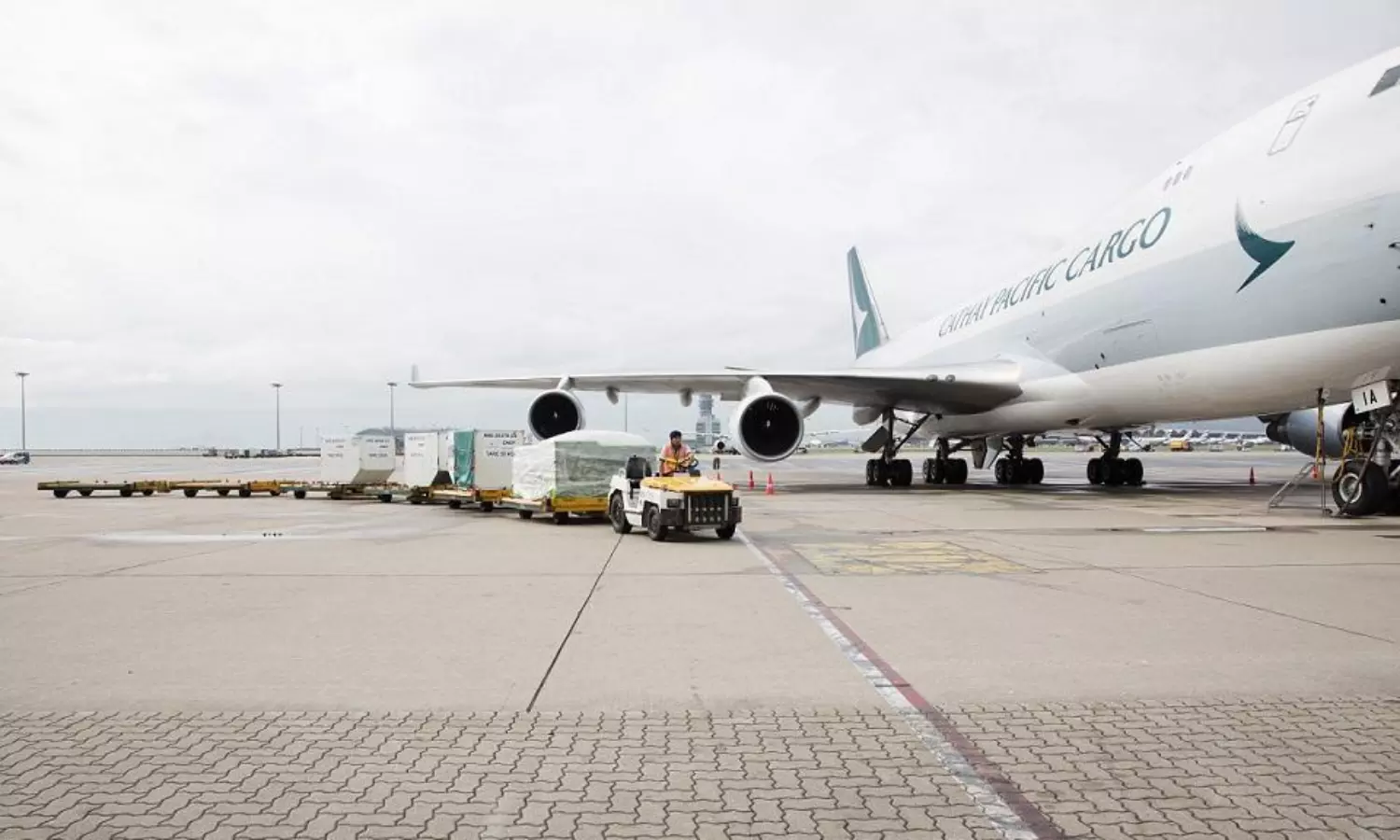Cathay Pacific cargo carried drops 20% in Oct on economic headwinds
Cargo revenue tonne kilometres (RFTKs) decreased 25% year-on-year, capacity was down 10%.

Cathay Pacific carried 109,425 tonnes cargo in October, a decline of 20 percent compared with October 2021 and a 40 percent decrease compared with the same period in 2019.
"The month's cargo revenue tonne kilometres (RFTKs) decreased 25 percent year-on-year, and were down 36 percent compared with October 2019," says an official release.
The cargo load factor declined 13.9 percentage points to 69 percent while capacity, measured in available cargo tonne kilometres (AFTKs), was down 10 percent year-on-year and down 37 percent from October 2019.
"In terms of cargo, global economic headwinds and anti-pandemic measures on the Chinese Mainland continue to impact trade flows and production," says Ronald Lam, Chief Customer and Commercial Officer, Cathay Pacific. "While our tonnage carried fell in October year-on-year compared with the high base of 2021, it saw a 5 percent increase over September. We operated about 10 percent less cargo capacity compared with the same time last year as we flew fewer cargo-only passenger services. Overall, we operated about 63 percent of our pre-pandemic cargo flight capacity last month.
"Our expanded network in Europe was a bright spot with double-digit month-on-month growth in October as we resumed more of our passenger services. This provided our cargo customers with more options, especially for specialised shipments such as pharmaceuticals."
In the first 10 months of 2022, tonnage decreased 11 percent to 944,923 tonnes against a 22 percent decrease in capacity and a 31 percent decrease in RFTKs compared to the same period for 2021.
"Regarding cargo, while the peak season this year will be subdued when compared to the unprecedented peak last year, we still expect to see increased tonnage driven by seasonal e-commerce events as well as the start of the perishables season in the Southern Hemisphere. As the belly capacity provided by our passenger flights increases over the months ahead, we are extending the reach of our network and increasing the choice of schedules for our air cargo customers," says Lam.


